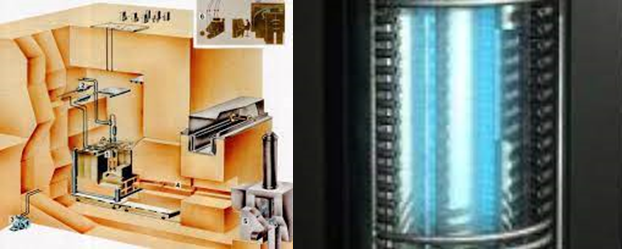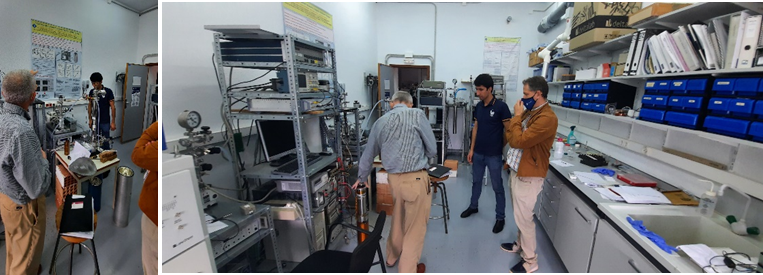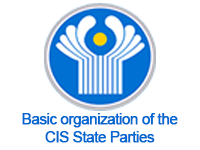PHYSICAL AND TECHNICAL SCIENCE IN THE YEARS OF INDEPENDENCE:
CHALLENGES OF THE MODERN WORLD
Farkhod Shokir
S.U.Umarov Physical–Technical Institute
of the National Academy of Sciences of Tajikistan

The world of the 21st century is undergoing profound, complex and fundamental changes associated with an unprecedented acceleration of scientific and technological development. Today, intensive and accelerating scientific and technological development is an objective reality, the nature of which naturally puts mankind before the fact of the dominance of scientific thinking. That is, the real and central potential is no longer the area of the state, population or natural wealth. The latest history of the development of global young brands shows and proves that the scientific organization of work and scientific thinking are the most stable categories that should be given urgent and due attention in the age of science and technology. In other words, the 21st century is increasingly revealing the true power and potential of science.
Following the rules of exact, natural and mathematical sciences, we will prove the above statement with clear and unambiguous facts. According to the analysis of one of the most authoritative and well-known economic publications in the world, the American financial and economic magazine Forbes [1], for several years the rating of the most expensive brands in the world has been headed by five companies with science-intensive products, namely Apple (with a capitalization of more than $ 2.5 trillion), Microsoft (2.0), Google (1.4), Amazon (1.3), Facebook (0.4). These companies are purely knowledge based and do not, for example, sell oil, gas or other natural resources. In this context, one of the companies whose capital, according to forecasts, by 2023 will exceed $ 3 trillion (Apple) is recognizable in the world, in particular, by its branded products – iPhone. The official cost of one copy of these products is sometimes a thousand US dollars (iPhone 13 Pro: $999 [2]) or more. However, if we look from the point of view of physics, it becomes clear that one copy of the iPhone, which has a mass in the range of 140-240 g, usually consists of 40% iron and aluminum, 15-20% carbon fiber, 15-17 % from composite materials (nickel, copper, chromium, cobalt, etc.), 6% from silicon and other elements in smaller proportions. In general, if we calculate the cost of 140-240 g of these constituent materials, at best we will get an amount equivalent to less than 2 US dollars [3]. That is, the value of products is determined exclusively by the intellectual, scientific component (more than 99.8%), and not by the material. Further, the classical scheme of the absolute advantage of automated copying of intellectual products is already working.
Many similar examples can be cited, which, with an objective approach, clearly show the huge creative potential of scientific development, since the results of the above example cannot be achieved in any other way than science. On the other hand, science as a field of human activity can exist and develop only and only in peaceful conditions. An analysis of the history of successful world brands shows that only in countries that have a peaceful system and categorically do not allow violations of law and order can scientific infrastructure be developed, which, if properly approached, is the most effective investment not only in an economic but also in a strategic sense.
Today we are on the verge of the 31st anniversary of State Independence, during which Tajik science at the beginning, overcoming certain and inevitable difficulties associated with the collapse of the Soviet Union, is now on the path of stable development thanks to the peaceful policy of the country’s leadership and the Head of State.
Including, as one of the representatives of the physics and technology field, I am a witness to the formation of this field in a new post-union format and its transition to sustainable development in the years of independence. On a concrete example of the history of the development of the S.U.Umarov Physical–Technical Institute of the National Academy of Sciences of Tajikistan (PhTI NAST) during the years of state independence of the Republic of Tajikistan, we can see how several key branches of Tajik physics were revived and switched to the path of development, starting from the world-famous outstanding scientific results of the Pamir experiment to the organization of modern innovative laboratories .
Experiment “Pamir”. As is known, since the 1970s, the PhTI NAST with the Physical Institute of the Academy of Sciences of the USSR (now FIAN) in the Pamirs in the Ak-Arkhar tract at an altitude of 4360 m above the level has been conducting research on the study of the interaction of elementary particles and nucleons with nucleons and nuclei at energies above 1012 eV. At that time, a number of unique and rare phenomena were observed in the Pamir experiment, such as the Sitora superfamily, formed by a particle with an energy of about 1017 eV. And the energy of interaction of particles of primary cosmic radiation of the superfamily “Tajikistan” was 1018 eV, which is the highest interaction energy of particles of all registered in world practice using X-ray emulsion cameras. During the years of independence, Tajik physicists tirelessly worked on the revival of this area and, with the support of the country’s leadership, since 2008, by signing the Agreement between Tajikistan and the Russian Federation, this area has moved on to the path of development. Nowadays, repair work has been carried out in the high-altitude stations of the Pamirs, continuous scientific research and annual expeditions are being carried out. The revival of cosmic ray research at the high-mountain stations of the Pamirs has a huge potential of world significance. At the moment, the PhTI NAST, together with representatives of the International Research Center “Pamir-Chakaltaya” with the support of the National Academy of Sciences and the Government of the Republic of Tajikistan, are carrying out calculations and discussions with scientific institutions of the countries of the world on equipping these stations with modern means of registering cosmic rays.

Nuclear physics – the research reactor Argus-FTI. In the early 1980s, the USSR Academy of Sciences decided to establish a nuclear analytical center at the PhTI NAST based on a powerful radiation source – the Argus-FTI reactor, which was due to the provision of a large amount of analytical research necessary for various branches of science and the national economy Republic of Tajikistan. But in connection with the subsequent collapse of the Union, work on equipping and launching the reactor was suspended.
Since the first years of state independence, the country’s leadership has been taking all steps to develop science and education. Thanks to the support of the Government of the country and the Head of State, the State Program for the restoration and further use of the Argus-FTI nuclear research reactor was adopted in 2015. The Argus-FTI reactor is distinguished by safety, simplicity, relatively low cost and compactness, while at the same time it has a high scientific and technological value. The Argus-FTI reactor makes it possible to obtain radionuclides that are intended for early diagnosis of oncological diseases, as well as for the treatment of oncological diseases, the use of which makes it possible to diagnose cancer at an early stage (1 year earlier than by traditional methods). They allow you to localize the tumor, prevent metastasis, and also have analgesic properties. The reactor allows, in addition to the production of isotopes and the determination of elements of geological samples through activation analysis, also to conduct non-destructive quality control of preparations through radiographic analysis.

Physics of the atmosphere, climatology. The issue of climate change is also particularly relevant in recent decades. At the PhTI NAST, the direction “Physics of the Atmosphere” includes the study of the state of the atmosphere, parameters affecting the state of the climate and the ozone layer, as well as the study of the formation of atmospheric aerosol as a result of dust storms and monitoring the state of technogenic atmospheric pollution: measurements of the total ozone content in a vertical column are regularly carried out atmosphere at different times of the year. In this direction, the PhTI NAST cooperates with a number of research institutes of foreign countries, including the Leibniz Institute for Tropospheric Research of the Germany (TROPOS), Lanzhou University College of Atmospheric Sciences, China. In particular, from June 26, 2019, a new innovative laboratory was delivered and installed at the PhTI NAST within the framework of grant agreements – the sixth in the world measuring station of the global atmosphere network for climate research “PollyNet”. The new station is the first in Central Asia and is located within the global dust belt stretching from Morocco to China. Within the framework of this cooperation, an exchange of Tajik and German young scientists is also carried out in order to train highly qualified personnel in the field of meteorology and climatology of the PhTI NAST and TROPOS. At the moment, preparations are underway for the delivery and installation of a similar innovative laboratory in cooperation with the College of Atmospheric Sciences of Lanzhou University of China.

Research of properties of new innovative materials by means of cluster calculations (quantum-mechanical calculations). One of the effective natural sources and an alternative approach to energy generation is the synthesis and optimization of the properties of new nanosized materials to create converters of solar and thermal energy into electricity, which is efficient and environmentally friendly compared to many other methods. The great growth potential of this branch of alternative energy is due to such global factors as the need to ensure national energy security and the increasing cost of fossil energy sources. Alternative energy has other unique advantages: for example, solar energy is available to everyone, free of charge, practically inexhaustible, and the process of its conversion into electrical energy does not have a negative impact on the environment.
On the basis of cooperation between the PhTI NAST with the foreign scientific centers, the Institute conducts studies of the geometric and electronic properties of innovative materials using the density functional theory method. Further, on the basis of grant agreements, computing microprocessors were obtained, on which quantum mechanical calculations are carried out to determine the patterns of dependence of the optical parameters of new materials on electronic geometric properties, which makes it possible to predict and find new efficient and stable systems. The purpose of these calculations is the need to develop a technology for creating highly efficient photovoltaic systems that convert solar radiation into electricity. Availability, cheap production, adjustable properties, relatively low cost and lower toxicology are key factors for research in this area. At the moment, a project is being developed at the PhTI NAST to create an innovative laboratory for the synthesis of nanofilms that meets modern requirements, the completion and launch of which is scheduled for the coming years. Within the framework of this project, young employees of the PhTI NAST undergo an internship at the University of the Balearic Islands in Spain and at the University of Nova Portugal.

Research and practical application of results in the field of low temperature physics – cryosurgical instruments. The PhTI NAST, together with the Research Institute of Gastroenterology, has invented an apparatus that can be used to use liquid nitrogen to destroy invisible infected cells on the spot. Only in the first year of the invention (2016), already 50 patients with tuberculosis and cirrhosis of the liver, and other diseases underwent operations using a new technology (by Professor S. Akhmedov), and people began to recover. To date, more than 300 successful cryosurgical operations have been performed. Prior to this, this technology was used in the oncological center of Moscow, it was also used in Holland, Italy and Japan, the developed method of treatment was not available for our country.

We can continue to describe the achievements of the physical and technical sciences in the country, which were realized thanks to the peaceful policy of the Government of the country and the acquisition of State independence, in which we had the opportunity to establish broad cooperation with scientific centers of the developed countries of the world. But, some of the results described above indicate that a peaceful and calm life and State Independence are the foundations for the development of science and education, as well as the well-being of the citizens of our country.
The staff of the S.U.Umarov Physical–Technical Institute of the National Academy of Sciences of Tajikistan is constantly conducting research activities in order to make an ever greater and fundamental contribution to the development of science and technology in the country with new innovative scientific results.
Congratulations to respected colleagues and dear fellow citizens on the upcoming Independence Day of Tajikistan, we wish your health, success and new scientific achievements!
Used sources
- https://www.forbes.com/the-worlds-most-valuable-brands/#47d2c901119c.
- https://www.apple.com/shop/buy-iphone.
- https://www.moneycontrol.com/news/business/companies/data-story-it-takes-hundreds-of-dollars-to-buy-an-iphone-but-just-over-a-dollar-to-make-one-2365065.html.



